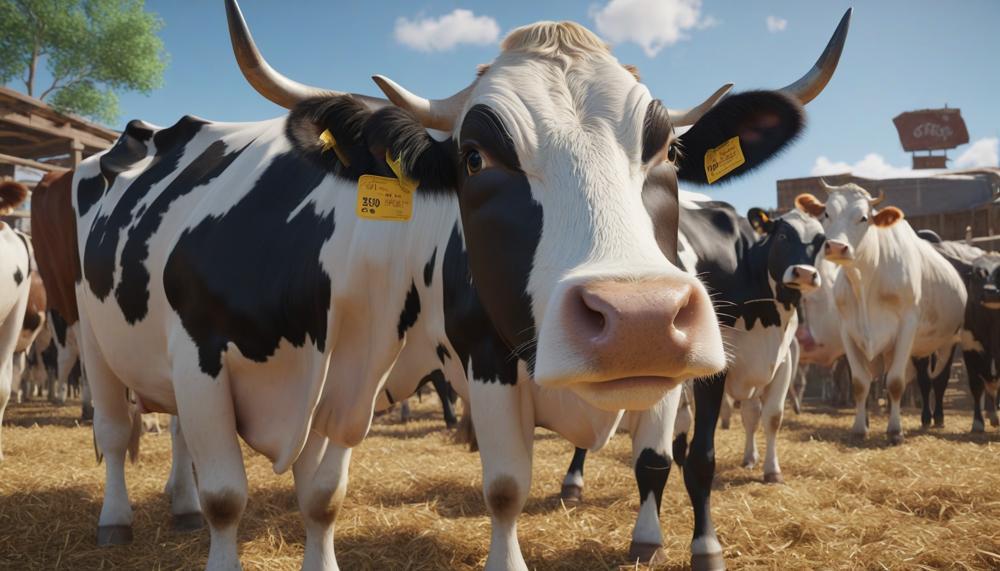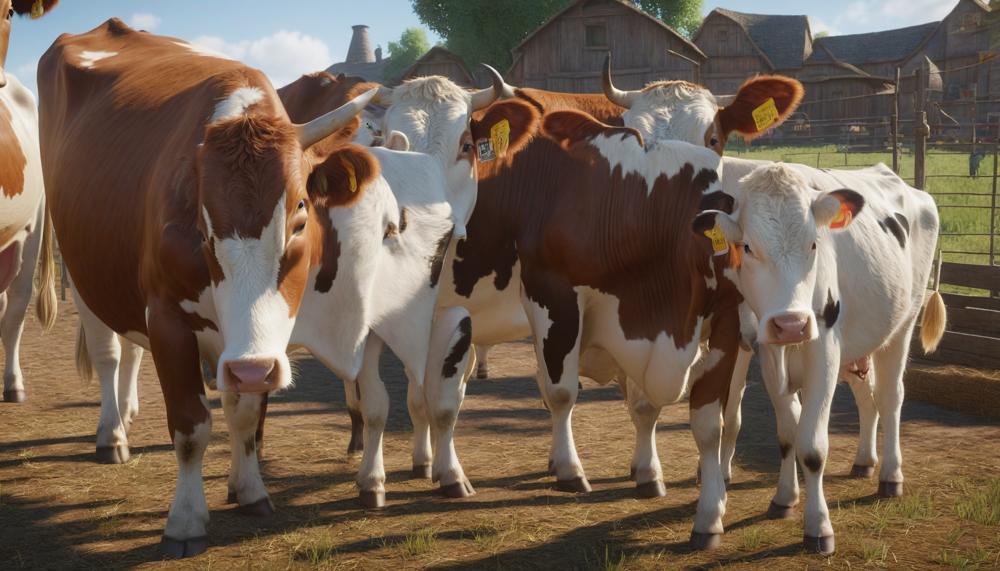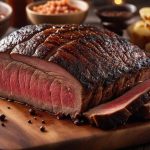Yes. Cow fat, also known as beef tallow, has been used in kitchens for centuries, and it’s making a remarkable comeback. This traditional cooking fat not only offers numerous health benefits but also enhances the flavor and texture of your dishes.
Key Takeaways:
- Health Benefits: Rich in essential fatty acids and vitamins, beef tallow supports heart health and boosts immunity.
- High Smoke Point: Perfect for frying and high-heat cooking without the risk of producing harmful compounds.
- Flavor Enhancement: Adds a rich, savory depth to dishes, making it a favorite in both traditional and modern recipes.
- Sustainability: Utilizing cow fat reduces waste and promotes sustainable cooking practices.
From crispy fried foods to tender, flavorful roasts, beef tallow proves its worth as a versatile and valuable cooking fat. Ready to transform your culinary creations? Dive into the world of cooking with cow fat and discover its benefits firsthand.
Contents
What Is Beef Tallow?
The primary difference between beef tallow and other types of cooking fats lies in their composition and culinary uses. Beef tallow, rendered from beef fat, is predominantly made up of saturated fats.
This gives it a solid form at room temperature, similar to butter and coconut oil. In contrast, oils like olive oil, peanut oil, and canola oil are primarily unsaturated fats, which keep them liquid at room temperature.
Key Differences Between Beef Tallow and Other Cooking Fats
| Cooking Fat | Primary Composition | State at Room Temperature | Culinary Uses |
| Beef Tallow | Saturated Fats | Solid | Deep frying, sautéing, roasting |
| Butter | Saturated Fats | Solid | Baking, sautéing, spreads |
| Coconut Oil | Saturated Fats | Solid | Baking, frying, skin care |
| Olive Oil | Unsaturated Fats | Liquid | Dressing, low-heat cooking |
| Peanut Oil | Unsaturated Fats | Liquid | Frying, Asian cuisine |
| Canola Oil | Unsaturated Fats | Liquid | Baking, frying, sautéing |
How To Use Beef Tallow
Beef tallow, with its rich flavor and high smoke point, can be a versatile addition to various dishes. Here are some creative ways to use it in cooking:
| Creative Use | Description | Benefit |
| Frying Potatoes | Fry in tallow for a crispy crust. | Rich flavor and perfect texture. |
| Making Gravies and Pan Sauces | Use as a base for sauces. | Enriches flavor. |
| Baking | Substitute for butter or oil. | Flaky and tender pastries. |
| Enhancing Soups and Stews | Add to broths. | Boosts meaty flavor. |
| Sautéing and Stir-Frying | Use for high-heat cooking. | Delicious taste and high smoke point. |
| Seasoning Cast Iron Skillets | Maintain non-stick surface. | Enhances cooking. |
| Making Tallow Candles | Create homemade candles. | Clean burning. |
| Popcorn | Pop kernels in tallow. | Unique, savory taste. |
| Basting Roasts | Keep meat moist. | Extra flavor. |
| Making Homemade Soap | Create DIY soap. | Long-lasting and creamy lather. |
What Does Beef Tallow Taste Like?
Beef tallow offers a distinctive, rich flavour profile that enhances many dishes. When used for cooking, its taste can be described as follows:
| Flavor Characteristics | Description | Common Uses |
| Rich and Savory | Beef tallow imparts a deep, savory taste to foods, reminiscent of roasted meat. This richness makes it ideal for hearty dishes. | Roasting vegetables, sautéing greens, frying potatoes |
| Umami | The natural umami flavor enhances the taste of dishes, adding a layer of depth and complexity. | Enhancing sauces, gravies, and soups |
| Subtle Beefy Undertones | While not overpowering, beef tallow provides a subtle beefy background note, complementing a variety of ingredients. | Basting meats, making pie crusts, cooking eggs |
| Clean and Pure | High-quality beef tallow, especially from grass-fed sources, offers a clean taste without any greasy residue. | Baking, frying delicate foods, making homemade candles and soaps |
Beef tallow’s unique taste comes from its composition. It is primarily made of saturated and monounsaturated fats, which contribute to its stable, high smoke point and its ability to retain flavor without breaking down under high heat. This makes it perfect for cooking methods that require consistent heat, such as frying and roasting.
Beef Tallow vs. Suet
The key difference between beef tallow and suet when it comes to cooking lies in their form and application.
| Beef Tallow | Suet |
| Beef tallow is rendered or melted suet, resulting in a smooth, shelf-stable fat. Its high smoke point makes it ideal for frying, roasting, and searing. The rich, savory taste of tallow enhances the flavor of dishes, making it perfect for grilling steaks or sautéing vegetables. | Suet is the raw, hard fat found around the kidneys and loins of cows. It has a higher melting point than tallow and is traditionally used in recipes that require solid fat, such as pastry crusts, puddings, and certain sausages. Suet adds a distinct, beefy flavor and creates flaky textures in baked goods. |
| Smoke Point: Approximately 250°C (482°F). Ideal for high-heat cooking like deep frying and roasting. | Smoke Point: Approximately 200°C (392°F). Best for low to medium-heat applications and specific traditional recipes. |
| Beef tallow can be stored at room temperature, making it convenient for frequent use. It’s also versatile, fitting well in various culinary applications from savory to sweet. | Suet needs refrigeration to maintain its solid state. It is often used in specific traditional recipes, like British Christmas pudding and certain meat pies, where its unique properties shine. |
Explanation
Beef Tallow:
- Form: Rendered, smooth fat.
- Uses: Ideal for frying, roasting, and sautéing. Adds rich flavor and crispiness to foods.
- Storage: Can be stored at room temperature due to its stable form.
- Versatility: Suitable for a wide range of recipes, from frying meats to making sauces.
Suet:
- Form: Raw, hard fat around the kidneys and loins.
- Uses: Traditional recipes requiring solid fat, such as pastries, puddings, and certain sausages. Enhances texture and flavor in baked goods.
- Storage: Requires refrigeration to keep its solid state.
- Specialty: Best for specific traditional dishes, where its unique properties are crucial.
By understanding these differences, you can choose the right fat for your cooking needs, whether aiming for the flaky texture in a pastry or the rich flavor in a roasted dish.
Beef Tallow Recipes
Beef tallow, a traditional cooking fat, lends rich flavour and a crispy texture to various dishes. Here are some easy and delicious recipes that utilise beef tallow:
Crispy Roast Potatoes
Ingredients:
- 1 kg potatoes, peeled and cut into chunks
- 3 tbsp beef tallow
- Salt and pepper to taste
- Fresh rosemary, chopped (optional)
Instructions:
- Preheat the oven to 200°C.
- Boil the potato chunks until tender.
- Drain and let them steam dry for a few minutes.
- Melt the beef tallow in a roasting pan in the oven.
- Add the potatoes to the pan, coating them in the hot tallow.
- Season with salt, pepper, and rosemary.
- Roast for 40-50 minutes, turning occasionally, until golden and crispy.
Tallow French Fries
Ingredients:
- 4 large russet potatoes, cut into fries
- 1 litre beef tallow
- Salt to taste
Instructions:
- Heat beef tallow in a deep fryer or heavy-bottomed pot to 190°C.
- Fry the potato slices in batches until golden and crisp, about 5-7 minutes per batch.
- Drain on paper towels and sprinkle with salt.
Tallow-Seared Steak
Ingredients:
- 2 steaks (ribeye or sirloin)
- 2 tbsp beef tallow
- Salt and pepper to taste
- 2 garlic cloves, smashed
- Fresh thyme sprigs
Instructions:
- Season the steaks with salt and pepper.
- Heat the beef tallow in a cast-iron skillet over high heat.
- Sear the steaks for 3-4 minutes on each side, adding garlic and thyme in the last minute.
- Rest the steaks for 5 minutes before serving.

Flaky Beef Tallow Pie Crust
Ingredients:
- 250g flour
- 1 tsp salt
- 150g cold beef tallow, cubed
- 60-120 ml ice water
Instructions:
- Mix flour and salt in a bowl.
- Cut in the beef tallow until the mixture resembles coarse crumbs.
- Gradually add ice water, mixing until the dough comes together.
- Roll out the dough on a floured surface and use it to line a pie tin.
- Fill and bake according to your pie recipe.
Beef Tallow Biscuits
Ingredients:
- 250g flour
- 1 tbsp baking powder
- 1 tsp salt
- 100g beef tallow, chilled and cubed
- 180ml milk
Instructions:
- Preheat oven to 220°C.
- Combine flour, baking powder, and salt.
- Cut in the beef tallow until the mixture resembles coarse crumbs.
- Stir in milk until just combined.
- Drop spoonfuls of dough onto a baking sheet.
- Bake for 12-15 minutes until golden brown.
Nutritional Benefits
Using beef tallow in these recipes not only enhances flavour but also provides nutritional benefits. Beef tallow is rich in healthy fats and vitamins, supporting overall wellness. It’s a natural and traditional alternative to modern cooking oils.
| Recipe | Preparation Time | Cooking Time |
| Crispy Roast Potatoes | 20 minutes | 50 minutes |
| Tallow French Fries | 15 minutes | 30 minutes |
| Tallow-Seared Steak | 10 minutes | 10 minutes |
| Flaky Beef Tallow Pie Crust | 15 minutes | Varies |
| Beef Tallow Biscuits | 10 minutes | 15 minutes |
Where To Buy Beef Tallow
You can purchase beef tallow for cooking from various sources, ensuring you get the best quality and taste. Here’s a detailed guide to help you find it:
| Source | Description | Details |
| Local Farmers’ Market | Many small-scale farmers and ranchers sell grass-fed beef and beef products directly to consumers. | Check the local farmers’ market for fresh, high-quality beef tallow. It’s often sold by producers who value sustainable and ethical farming practices. |
| Local Butcher or Meat Shop | Local butchers often have beef tallow, especially those specializing in grass-fed and organic meat. | Visit or call your local butcher. They can provide you with freshly rendered tallow or may even render it upon request. |
| Supermarkets | Some supermarkets stock beef tallow, usually in the same aisle as stocks and broths. | Look for it near the cooking oils and shortening. Stores like Whole Foods and specialty grocery stores are good places to start. |
| Online Retailers | Beef tallow can be conveniently purchased online from reputable producers. | Consider buying from trusted online sources like Amazon or direct from grass-fed beef producers such as US Wellness Meats or Fatworks. |
Beef tallow is a versatile cooking fat that enhances the flavour and texture of your dishes. Whether you’re making crispy roast potatoes or searing a steak, the rich taste of beef tallow can elevate your culinary creations. For the best quality, opt for grass-fed and grass-finished beef tallow, which offers superior nutritional benefits and taste.
By exploring these sources, you can ensure that your pantry is stocked with this traditional and nutritious cooking fat.
Storing Beef Tallow
The best way to store beef tallow to ensure its quality and longevity for cooking purposes is by using airtight containers and keeping it in a cool, dark place. Here are the detailed steps:
- Airtight Containers: Use glass jars or stainless steel containers with tight-fitting lids. This prevents air exposure, which can lead to oxidation and rancidity.
- Cool and Dark Storage: Store beef tallow in a pantry or cupboard away from direct sunlight. At room temperature, beef tallow can last up to one year if properly sealed and stored in a dark environment.
- Refrigeration: For extended freshness, refrigerate beef tallow. In the fridge, it can last up to two years. Make sure the container is airtight to avoid absorbing fridge odors.
- Freezing: For the longest shelf life, freeze beef tallow. It can remain fresh for up to five years in the freezer. Use freezer-safe containers or vacuum-sealed bags for best results.
- Avoid Reusing Cooked Tallow: Do not reuse tallow that has been used for frying or cooking, as this can introduce impurities and accelerate spoilage. Always use fresh tallow for each cooking session.
- FIFO System: Implement a First In, First Out (FIFO) system. Label containers with dates to ensure older tallow is used before newer batches.
- Check for Rancidity: Before using, always check the smell and appearance of the tallow. Rancid tallow will have a sour odor and an off taste. Discard any tallow that shows signs of spoilage.
Conclusion
Cow fat, or beef tallow, is an exceptional cooking fat with a rich history and contemporary appeal. Renowned for its myriad benefits, beef tallow is a kitchen staple for those seeking flavor, health, and sustainability.
- Health Benefits: Beef tallow is rich in essential fatty acids and vitamins that promote heart health and bolster immunity.
- High Smoke Point: Its stability at high temperatures makes beef tallow ideal for frying, roasting, and sautéing, ensuring your food cooks evenly without the risk of harmful compounds.
- Flavor Enhancement: Tallow adds a savory depth to dishes, enhancing everything from crispy fried foods to succulent roasts.
- Sustainability: Utilizing cow fat supports sustainable cooking by reducing waste and making the most of the entire animal.
Comparatively, beef tallow stands out among other fats. Unlike the liquid consistency of olive or canola oil, tallow remains solid at room temperature, akin to butter and coconut oil. This solid form lends itself well to high-heat cooking methods.
Incorporate beef tallow into your kitchen repertoire for frying potatoes to a golden crisp, making flaky pastries, or even seasoning cast iron skillets. Its versatility extends beyond the kitchen, being useful in making candles and soap.






